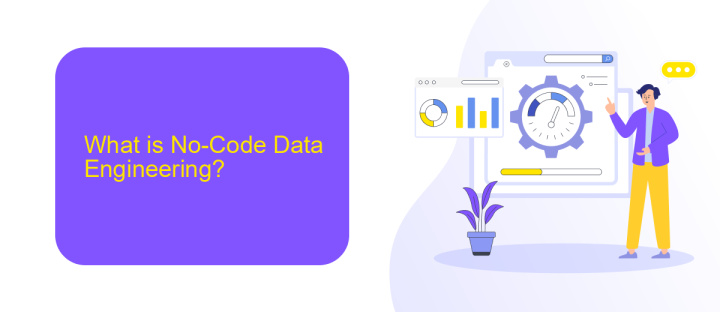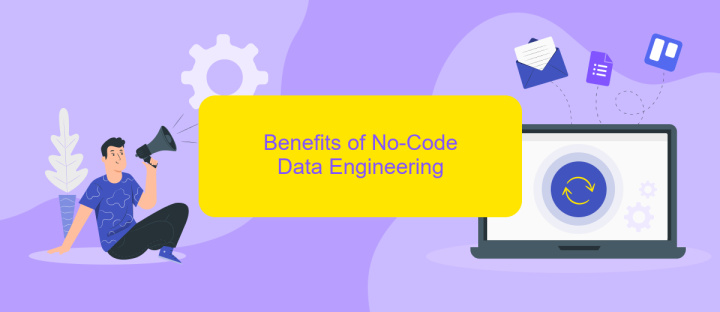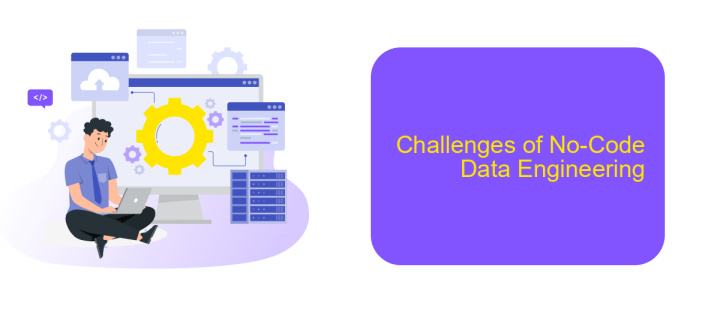No-Code Data Engineering
No-code data engineering is revolutionizing the way businesses handle data by enabling users to build, manage, and optimize data pipelines without writing a single line of code. This approach democratizes data access, allowing non-technical stakeholders to participate in data-driven decision-making, thereby accelerating innovation and efficiency across various industries. Discover how no-code platforms are transforming data engineering and empowering organizations.
Introduction
No-Code Data Engineering is revolutionizing the way businesses handle data by removing the need for extensive programming knowledge. This approach empowers non-technical users to manage, integrate, and analyze data efficiently, fostering innovation and agility within organizations.
- Streamlined data integration processes
- Reduced dependency on IT departments
- Enhanced data accessibility for all team members
One of the key tools in this space is ApiX-Drive, which facilitates seamless integration between various applications and services. By using ApiX-Drive, businesses can automate workflows, synchronize data in real-time, and significantly cut down on manual data entry tasks. This not only saves time but also minimizes errors, making data management more reliable and effective.
What is No-Code Data Engineering?

No-Code Data Engineering refers to the practice of designing and managing data workflows and pipelines without the need for traditional coding skills. This approach leverages intuitive, user-friendly interfaces that allow users to configure, automate, and manage data processes through drag-and-drop tools and pre-built templates. It democratizes data engineering, enabling non-technical users to participate in data projects, thereby accelerating development cycles and reducing dependency on specialized IT staff.
One of the key aspects of No-Code Data Engineering is the integration of various data sources and applications. Tools like ApiX-Drive facilitate this by providing seamless connections between different platforms, allowing users to automate data transfers and transformations without writing a single line of code. This not only simplifies the process but also ensures that data is always up-to-date and accessible, empowering businesses to make data-driven decisions more efficiently.
Benefits of No-Code Data Engineering

No-Code Data Engineering offers numerous advantages, making it an appealing choice for businesses looking to streamline their data processes. By eliminating the need for extensive coding knowledge, it democratizes data management and allows non-technical users to contribute effectively.
- Accessibility: No-code platforms make data engineering accessible to a broader audience, enabling business analysts and other non-technical staff to handle data tasks.
- Speed: These platforms significantly reduce the time required to develop and deploy data solutions, accelerating project timelines.
- Cost-Efficiency: By reducing the need for specialized coding skills, companies can lower their operational costs.
- Integration: Tools like ApiX-Drive facilitate seamless integration between various data sources and applications, enhancing data flow and usability.
- Scalability: No-code solutions are often highly scalable, allowing businesses to grow their data capabilities without complex re-engineering.
Incorporating no-code data engineering tools can transform how organizations manage and utilize their data. With platforms like ApiX-Drive, integrating various data sources becomes straightforward, empowering teams to focus on deriving insights and making data-driven decisions.
Challenges of No-Code Data Engineering

No-code data engineering offers many advantages, but it also comes with its own set of challenges. One of the primary issues is the limitation in customization. While no-code platforms provide a wide range of functionalities, they often lack the flexibility that traditional coding offers, making it difficult to tailor solutions to specific business needs.
Another significant challenge is scalability. No-code tools might perform well for small-scale projects, but as the volume of data grows, these platforms may struggle to maintain performance and efficiency. This can become a bottleneck for businesses looking to scale their data operations.
- Customization limitations
- Scalability issues
- Integration challenges
- Security concerns
Integration with other systems can also be problematic. Although services like ApiX-Drive facilitate the setup of integrations without coding, there can still be complexities involved in ensuring seamless data flow between disparate systems. Additionally, security remains a concern, as no-code platforms may not offer the same level of data protection as custom-coded solutions.
- Automate the work of an online store or landing
- Empower through integration
- Don't spend money on programmers and integrators
- Save time by automating routine tasks
Future of No-Code Data Engineering
The future of No-Code Data Engineering is incredibly promising, driven by the increasing demand for rapid data integration and processing solutions. As businesses continue to generate massive amounts of data, the need for efficient, user-friendly tools that allow non-technical users to manage and analyze this data becomes critical. No-code platforms are evolving, incorporating advanced features like machine learning and AI-driven analytics, making it easier for organizations to leverage their data for insightful decision-making without the need for extensive programming knowledge.
One of the key aspects of this evolution is the integration of various data sources and applications. Services like ApiX-Drive are at the forefront, offering seamless integration capabilities that allow users to connect different platforms effortlessly. By automating data workflows and synchronizing information across multiple systems, ApiX-Drive enhances the efficiency and accuracy of data engineering tasks. As these tools continue to advance, we can expect a future where data engineering is more accessible, efficient, and integral to business success.
FAQ
What is No-Code Data Engineering?
How does No-Code Data Engineering benefit businesses?
What types of tasks can be automated using No-Code Data Engineering platforms?
Can No-Code Data Engineering handle complex data workflows?
How do I integrate different data sources using a No-Code Data Engineering platform like ApiX-Drive?
Apix-Drive will help optimize business processes, save you from a lot of routine tasks and unnecessary costs for automation, attracting additional specialists. Try setting up a free test connection with ApiX-Drive and see for yourself. Now you have to think about where to invest the freed time and money!


